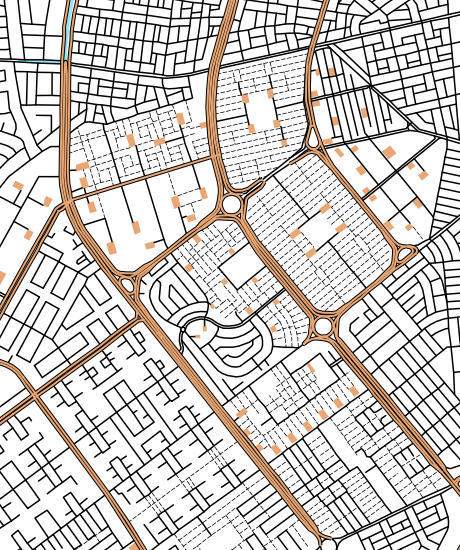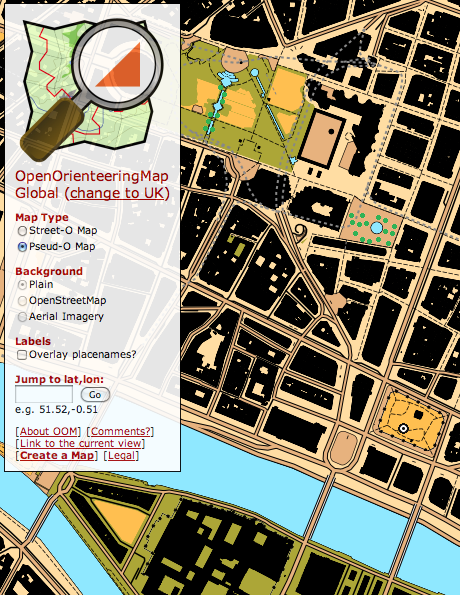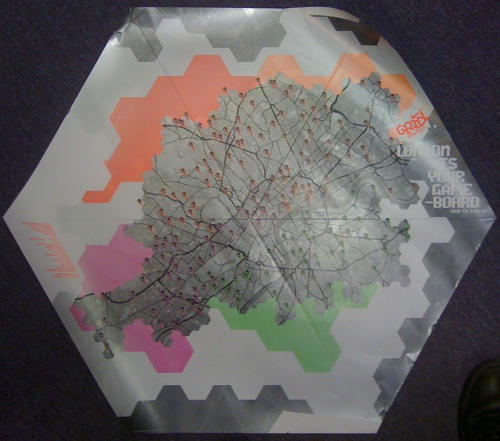Dr Martin Austwick and I have produced an updated version of the animation of Barclays Cycle Hire bikes on a typical weekday:
Martin has once again done some programming magic to show the River Thames, Hyde Park/Kensington Gardens and Regent’s Park to add context, plus the trails for the bike “motes” are longer, allowing the road network to be picked out more easily – and the network lines remain as faint “ghosting” in the video. The bikes are also more blue! Although the bridges aren’t specifically marked, their locations quickly become obvious from the volume of bikes crossing them.
I’ve redone the routing, to fix a few problems around Trafalgar Square and a couple of other obvious places. As before, the routing is done using OpenStreetMap data and the Routino routing scripts, optimised for bike usage (i.e constant speeds on all road types, obeying one-way roads and taking advantage of marked cycleways.) I’ve tweaked the desireability of road types, so that trunk and primary roads are now only slightly less desirable than quieter routes. The traffic in most parts of central London is so slow that, based on my own observations, such roads are not such a significant deterrent to cycling. As before, I’m assuming the bikes go along the “best” route, I don’t know where they actually went. Hires that start and end at the same point – popular in Hyde Park – are shown with the motes spinning around the point.
I’ve also included road curves this time. This means bikes don’t go in straight lines between junctions. This was particularly noticeable when they cut the corner of the Thames in the last animation! Watch the bikes as they carefully curve around the kinks of West Carriage Drive in Hyde Park, around the graceful arcs of Regent Street and Aldwych and along the Victoria Embankment. (I don’t think there are many other classic curves in the central London area?)
Expand the video to full-screen, and, if your connection can take it, click the HD button to get a higher-quality with even bluer bikes!
The data for the bikes themselves is from Transport for London, with the Thames, parks and the underlying network being faithfully drawn by OpenStreetMap contributors. One of the great advantages of using OSM data – apart from it being easy to access, is it’s often very up-to-date. For example, you can see the kink at the northern end of Blackfriars Bridge, on the animation, where the road bends around the Blackfriars Station redevelopment site.




 The routing is done based on the
The routing is done based on the 




 Not Scarborough…
Not Scarborough…


